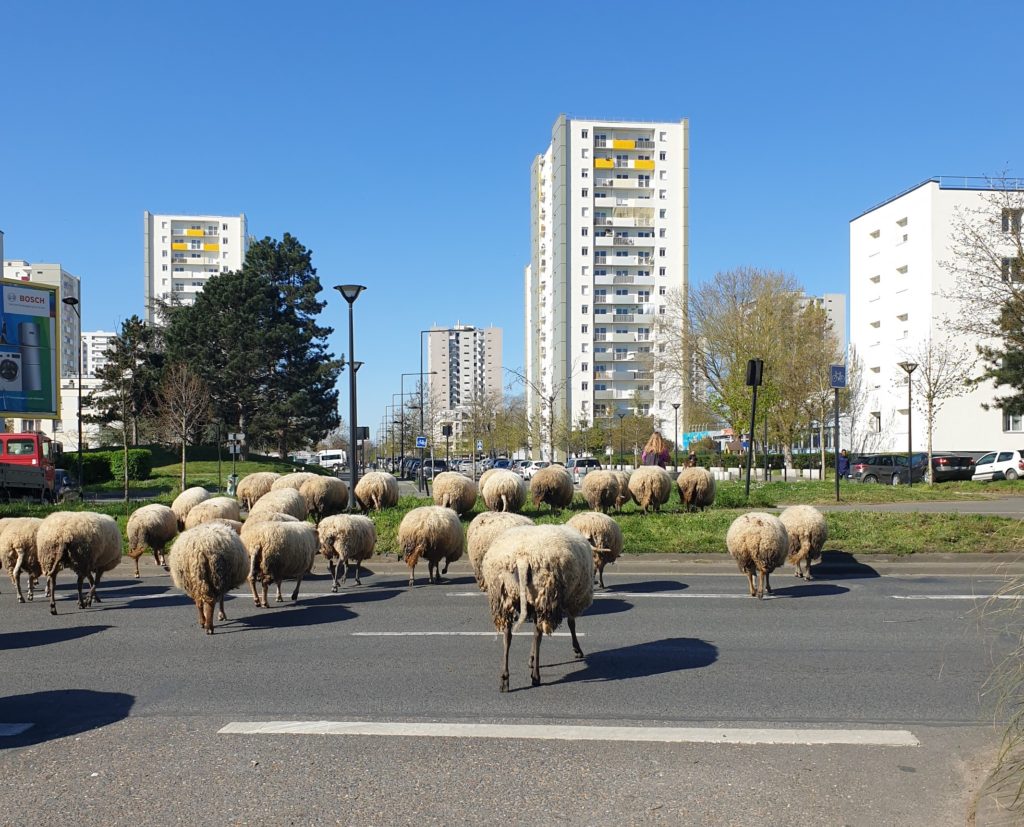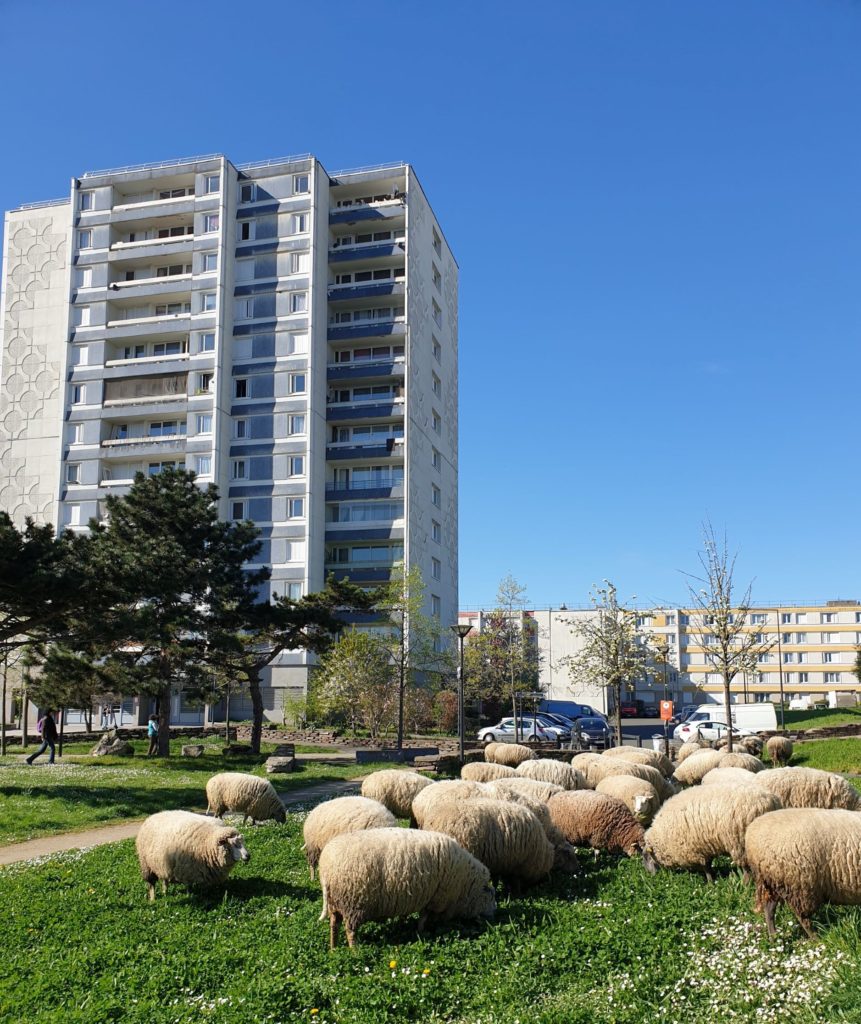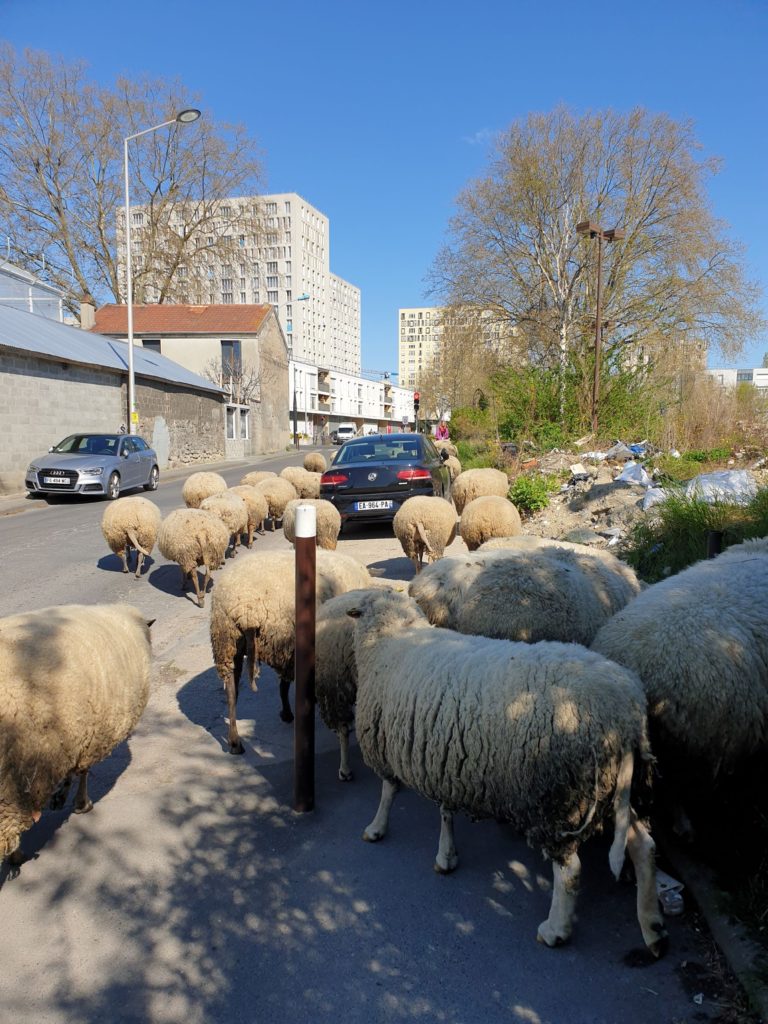I’ve found the ideal walking companions to see Paris’s outskirts.
They don’t need bathroom stops, don’t argue with your itinerary (unless they find a yummy clump of grass), don’t need to stop for lunch (as noted), don’t care if it rains and don’t have a language barrier. They don’t get tired, irritated or frustrated and they certainly don’t care if we skip a museum or two.
They also take a walker’s mind off the Ukraine war, the French presidential election, the U.S. congressional midterms and the rise of authoritarianism. In fact, authoritarianism suits them just fine. They’re sheep.

I found this walk, and this flock of 35 sheep, on Explore Paris, a site and email list that includes activities not just in the city but in what’s called Greater Paris: the central city and more than 130 close-in suburbs. There are many appealing attractions, including a microbrewery, a gypsum factory and a famous department store, as well as more traditional options.
I chose this one because sheep. In addition, it wasn’t available often. Every few months, this flock, which is managed by a nonprofit association called Clinamen, rotates from one habitual location to another, about a two-hour walk on an east-west axis north of Paris.
The huge suburban park where I was to meet the sheep was, of course, accessible by public transit. The stop where I got off was in the middle of nowhere, but it was only a 15-minute walk, in cold but sunny weather, to the park.

At Clinamen, I was welcomed by shepherdess Axelle (a volunteer) and the cooped-up sheep. They did what sheep are really good at, which is look at you. The annual shearing was just a few weeks away, Axelle explained, explaining why they looked like oversized toy blocks on spindly legs. Axelle also explained that what we were doing was called transhumance, the word for the seasonal livestock transfer between pastures.

I met my two very nice fellow tourists, who sadly did not want to be identified, and Julie, the second shepherdess. We set off through the park, Axelle in the lead and us all behind. The sheep, Julie explained, were trained to follow Axelle.
This happened sometimes. Other times, the sheep stopped for snacks, to the joy of young park visitors who wanted to pat them.

Samantha and Nina, as I will call my fellow helpers, quickly figured out that it was our job to urge them forward. Nina tried verbal suggestions, to little effect. I aped Samantha, who had been on a previous walk, and picked up a stick. Off we went.
As we walked, Nina explained that she had been a nurse but had recently quit because of burnout and now wanted to work with sheep. This was the first test run.
The sheep seemed perturbed by nothing except the occasional dog in the park. They crossed the street at the exit with aplomb and a fair amount of hurry-ups from us in the rear.

After the park was Saint-Denis, a large suburb that I had previously identified mostly with terrorism. Clearly a stereotypical impression, since the place was green and well-kept. People seemed delighted to see us. As we walked down the sidewalks, the locals called out greetings to our shepherdesses, who make this trip regularly. “The butcher is that way!” joked one.

Then it was time for a grass break, in a pastoral apartment complex. I was glad I had brought a snack and some water for myself.

The next portion of our route took us down quite a narrow sidewalk, and our companions showed a worrying tendency to hop off the into the street. Axelle and Julie didn’t seem worried, but we newbies found it pretty stressful.

It was around this time that I realized, happily, that I hadn’t thought about anything but sheep since we started out. I asked Nina how this experience was affecting her desire to spend more time with sheep. “I’m in the clouds,” she smiled.
Another break provided an opportunity to take a selfie. It is not that easy with sheep since they tend to walk away when one gets close.

A last walk along a busy street that also had a tram line on it, and we turned into a university campus, where they sheep would stay. On that road, I asked Julie whether the sheep had names. “Oh yes!” she said. “Actually, their names depend on their families. So Medici is from the Royal Family group, while Denise is from Hip-Hop.” I never did figure that last one out but the other groups were Antibiotics and Compound Names. Presumably there was a sheep named, say, Marie-Louise (They were all ewes, and their breed was Bleu de Maine.).
As we walked to their destination pasture, Samantha looked at the butts bobbing in front of us and said, “They’re so peaceful. Everyone should have more animals in their lives.” And when we got into Julie’s car to be driven to the train station, we saw a sticker on her visor that said “Plus de Laine, Moins de Haine.”
More wool, less hate. What a great message to take back.

A great read! Thank you Anne.
Thanks so much, Joan!
Wonderful! I have only been able to walk with sheep in New Zealand… who would have imagined it could be possible in Paris. Thanks for this delightful little trip with you.
Thanks, Debbie! Yes, these sheep are a bit closer to home.
Enjoyed it. You picked a perfect and original antidote to our collective misery. I wondered why I like staring at the goats employed every year to eat the weeds at our church!
Exactly, same idea!
So much fun to go for a virtual walk with you!
Come visit and we’ll make it a real walk!
Loved this! Sometimes there are sheep pastured on the green space on Avenue de Breteuil – so you can see them grazing as you look up at Invalides. I don’t think the sheep ever look up, though.
Indeed, they seemed like four-legged food shovels to me! Glad you liked it!
Interestingness
Such a strange site for a city. Sure wouldn’t want to have to clean up after them!
Been to Paris many times but never knew that sheep were part of the scene. Thanks for the post